Factory Planning in Mechanical Engineering – Material Flow Simulation as a Digital Tool
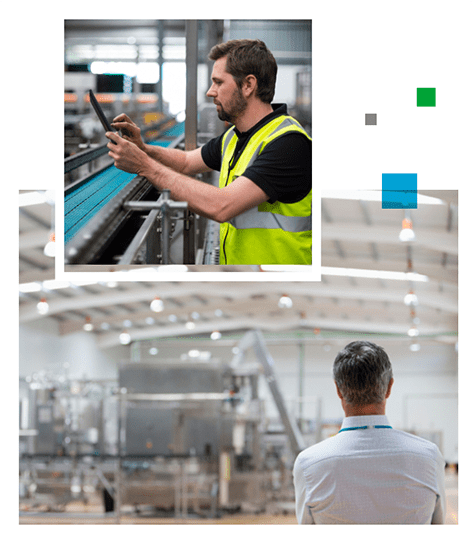
What is factory planning?
Factory planning refers to the process of systematically developing and designing production facilities or factories. This process includes various aspects to ensure that these facilities can be operated efficiently, safely and economically.
Factory planning includes a number of steps, beginning with selecting the location for the factory taking into account factors such as transportation, raw material availability, labor costs and market access. Layout design – the spatial arrangement of machines, work areas and other facilities within the factory – ensures a smooth flow of materials and efficient production. Comprehensive factory planning also includes material flow analysis – examining and optimizing the flow of materials throughout the production process in order to minimize bottlenecks and maximize production capacity. The next step is systems planning. Simulation can help optimize the selection and placement of production equipment and machines, as well as the determination of production capacities. A human twin aids in workplace design. Ergonomically-designed workplaces can be created to improve the efficiency and well-being of employees. Finally, the last step involves planning infrastructure such as the power supply, water supply, wastewater disposal and other services.
Learn more about factory planning and what this new technology can do for your company.
Why is good factory planning so important and what are the first steps?


Good factory planning is essential to ensuring efficient and competitive production processes. A well-planned factory enables a smooth flow of materials and minimizes unnecessary transportation routes, leading to shortened production times and lower operating costs. By optimizing production processes and workflows, companies can save costs – by reducing energy consumption, interim storage, material waste or labor, for example. Only good factory planning allows companies to react flexibly to changing market conditions or product requirements. The plant should be designed in such a way that it can be easily adapted in order to manufacture different products or accommodate different production capacities. Designing ergonomic workplaces with safety in mind also contributes to employee satisfaction and reduces the risk of accidents. Plus, green factory planning helps reduce environmental impact through sustainable practices and the use of resources to lead to even greater sustainability.
Learn more about iPhysics and its benefits for your company. Test it for free and without obligation with our live demo.
The first steps of factory planning are:
- Set goals: define clear goals for the factory, such as production capacity, increased efficiency, cost reduction or compliance with environmental standards.
- Select a location: choose the location of the factory considering factors such as logistics, availability of raw materials, availability of labor and access to the market.
- Needs analysis: determine production needs, the equipment needed, and labor requirements.
- Layout design: develop an efficient layout that optimizes the flow of materials and helps achieve production goals.
- Select technology: choose the suitable production and automation technology to help you reach production goals.
- Environmental compatibility: take environmental aspects into account to promote sustainable production and comply with legal requirements.
- Investment planning: estimate the costs of factory planning and ensure that your budget is sufficient.
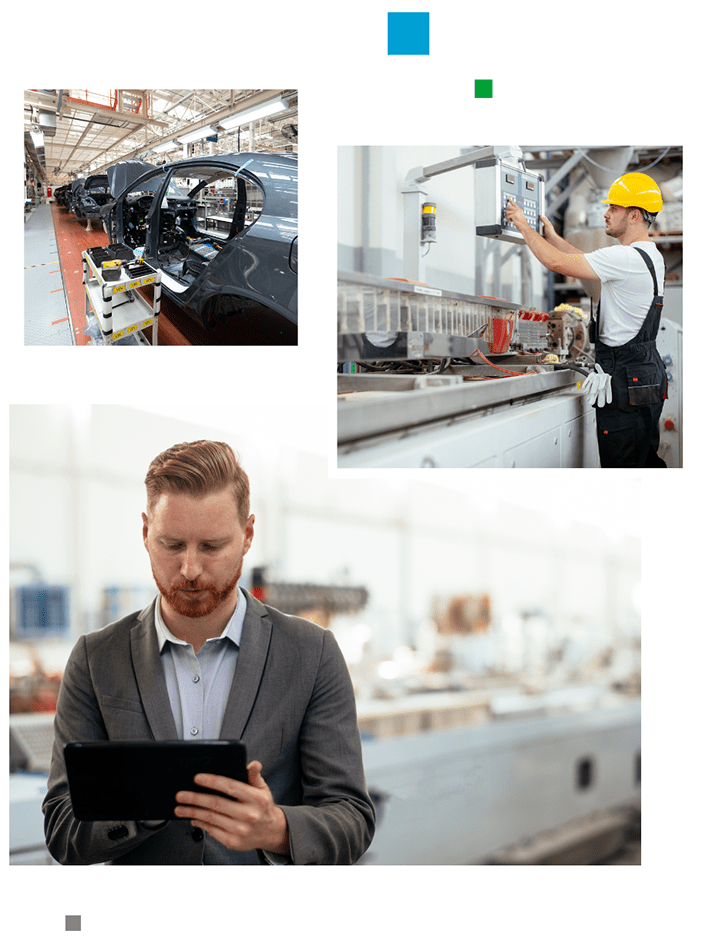
The planning of a factory begins with the definition of production processes
Defining the manufacturing process is a central step in factory planning. The manufacturing process determines how raw materials are transformed into the final product, as well as what steps and resources are needed. A clear definition of the manufacturing process sets the foundation for all further planning steps.
It’s important for planners to keep certain aspects in mind when defining the manufacturing process. The product design determines how the end product will look and function. When selecting suitable manufacturing technology, consider not only machines and tools, but also automation technology. Then, define the steps that must be carried out in the manufacturing process and determine the order and dependencies of these steps. Next, think about the flow of materials throughout the manufacturing process. This includes incoming raw materials, the progression through various stages of production, and the output of the finished product. Estimate the production capacity required to produce the desired quantity of finished products; this will influence which machines are selected and how they are arranged, as well as the dimensions of the production system. Consider the quality standards that apply to the final product. Determine how and what quality checks will be done during the manufacturing process to ensure the final product meets the relevant standards.
Learn more – our user reports give insight into how other companies have successfully put iPhysics to use.
iPhysics accompanies the machine from the initial idea, planning and virtual commissioning through to ongoing operation and servicing. iPhysics, the simulation software for real virtual engineering.

Your challenges
Uncertainty as to whether everything really works together
Too many details that are overlooked
Big surprise at the end: what happens if it doesn’t work?
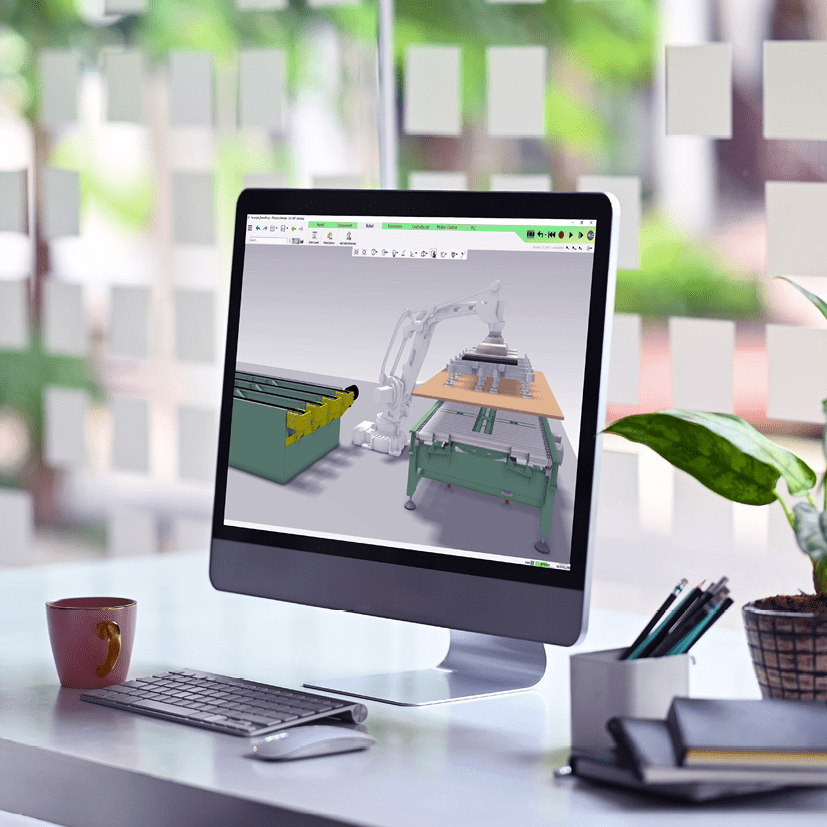
iPhysics – your solution
iPhysics makes it possible to plan machines and even entire entire factories is possible
Integration of all data from VIBN, the digital twin and the human twin in one platform
Simple connection of XR technologies turns factory planning into a comprehensive process
The material flow can be easily displayed virtually, adapted and planned as a whole

Your advantages
More reliable and predictable than ever before
Better planning capability
Assurance that the machines are working
Collaborations are planned in
machineering – simulation from one source
Six steps to your digital factory
Shifting to a digital factory includes using information technology (IT) and automation to make production processes more efficient. Here are six general steps on the path to becoming a digital factory:
1. Develop your digital strategy:
- Identify business goals: clearly define company goals that should be achieved through the digital transformation.
- Analyze the current situation: review existing processes, technologies and capabilities in order to identify areas for improvement.
2.Networking of systems and machines:
- IoT (internet of things) integration: incorporate sensors and intelligent devices to collect and analyze production data.
- Real-time monitoring: implement systems to monitor production processes in real time in order to enable better control and error detection.
3. Create digital twins:
- Virtual representations of physical processes: develop digital models that reflect the condition and performance of physical systems in real time.
- Simulation: use digital twins to simulate production processes in order to test efficiency and optimizations before they are actually carried out.
4. Introduce automation and robotics:
- Automate processes: introduce automated systems to take over repetitive tasks and increase production efficiency.
- Robotics: integrate robots for assembly, packaging and other tasks to improve production capacity and precision.
5. Data analytics and artificial intelligence (AI):
- Big data analysis: evaluate large amounts of production data to identify patterns and make informed decisions.
- Take advantage of AI: use AI algorithms for predictive analysis, maintenance forecasting and process optimization.
6. Ensure security and data protection:
- Cybersecurity: implement strong security measures to protect digital systems from threat.
- Data privacy: ensure compliance with data privacy regulations in connection with collected production data.
It is important to note that the transformation into a digital factory is an ongoing process. The technological landscape is constantly evolving and companies need to regularly review and update their digital strategies to stay competitive. Success also depends heavily on employee training and their willingness to accept new technology.
Make the upgrade. Let us assist you in your planning. Learn more in our free webinar.
The right tools for digital factory planning
Digital factory planning requires the use of specialized tools to make the process efficient and precise. What tools does a company need to plan and make their digital factory a reality? CAD software is used for precise layout design when creating detailed 2D and 3D models of production plants and facilities. The right PLM system ensures product information and documentation is managed throughout its entire life cycle. With simulation software such as iPhysics, you can visualize comprehensive simulations of production processes. With the help of virtual commissioning, errors can be avoided early on. IoT platforms integrate sensors and smart devices to collect data in real time. And a digital twin, the virtual counterpart to a real machine, assists in the simulation, monitoring and optimization of production processes, all in real time. An ERP system coordinates various business processes, improves communication between departments and ensures that resources are used efficiently. Virtual reality (VR) and augmented reality (AR) offer immersive experiences to identify problems early and train employees.
Selecting the right tools depends on the specific requirements and goals of your factory planning. Using these tools in an integrated way enables complete and effective digital factory planning based on precise data and simulations.
Make the switch today. With our training courses, we help your employees get ready for the metaverse – and the future.
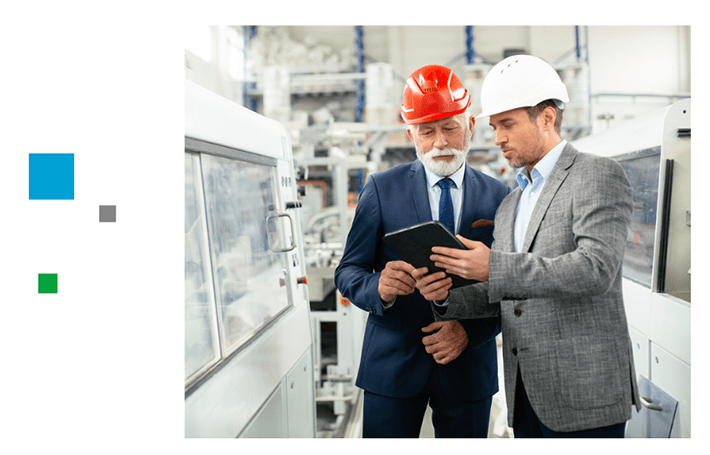
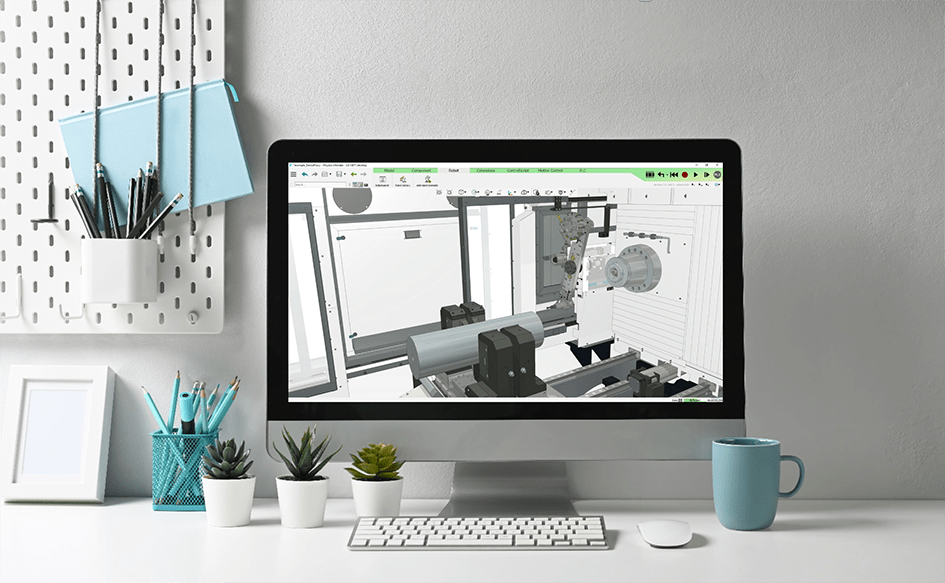
Extended Reality – “visit” your factory virtually
XR (Extended Reality) is playing an ever-more important role in digital factory planning and optimization. By using AR- and VR-technology, companies can navigate their factories, visualize processes and make changes virtually before they are physically made. This means factories can be explored virtually before they are actually built or adapted. Stakeholders can take a tour of the facility to review its layout, identify potential problems and make improvements. Virtually displaying different layouts and configurations of production facilities enables planners to simulate and evaluate different layout options to find the most efficient material flow and the best arrangement of machinery. In addition, virtual training can be conducted to teach employees about the production processes and systems.



Simulation models of production processes can be created in advance to identify bottlenecks and optimize the processes using the right simulation software. Plus, simulations of maintenance processes can be created to train maintenance teams. Finally, virtual reality can be used to display real-time data and performance analysis in virtual environments.
Using XR in factory planning not only offers more efficient planning, but can also lead to cost savings by detecting and avoiding errors early. Companies can use XR to create interactive and immersive experiences that improve the effectiveness and precision of factory planning and optimization.
Get the most from your company. Optimize your processes with our simulation software, iPhysics, and reap all the benefits.
Talk to us to determine your savings potential.


